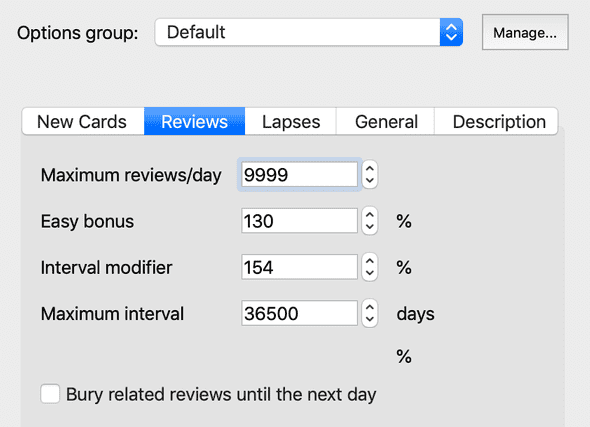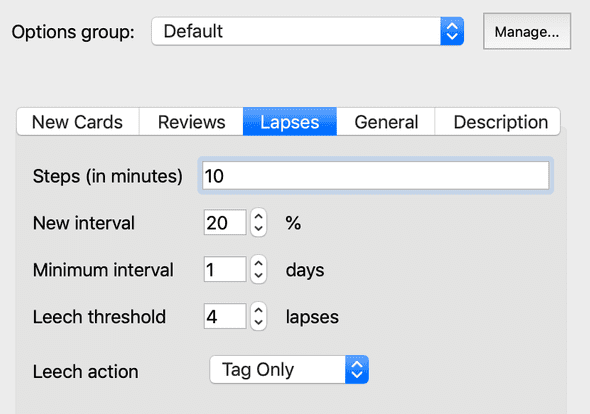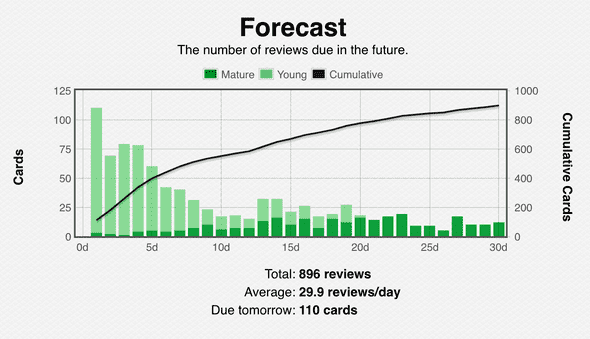Weekly Update - Jan. 11, 2020
January 11, 2020
Learning 3,000 Chinese Characters
You can track my progress here.
I learned 145 new characters, taking my total to 1,020/3,000. I learned fewer characters this week because I needed to clean up my review backlog.
I spent a little more time this week studying characters than I normally do — 9.5 hours vs. my usual average of around 8. There are a few reasons for this, which I’ll break down below.
Getting Stuck in Anki ‘Ease Hell’
The point of using Anki is to minimize the time you need to spend reviewing stuff you’ve already learned. The software will schedule spaced out reviews for you so you can practice different cards at different intervals. Ideally, a word’s interval is just shorter than the time it takes for you to forget that word (thus, you’ll remember the word just before you forget it).
I wasn’t aware of it, but I had been slowly accumulating more and more review cards. I had set my maximum daily reviews to 200 cards, but meanwhile, I was building a backlog of 600+ cards to review!
Considering it took me 75-100 minutes every day just to get through my new cards and my old cards, it would take me forever to get through the review debt I had accumulated for myself.
At the same time, I was getting roughly 90% of my review cards correct.
I was in ease hell.
What is ease hell?
Ease hell happens when your Anki cards are consistently ranked too ‘easy’ by the program. Each card has something called an ‘Ease Factor,’ which helps determine how long you should wait before you see the card again.
Anki thought I needed more reviews than I did. I was seeing certain cards way too often, and this was causing me to spend too much time reviewing every night. The other problem is that I had too many redundant cards in my deck (discussed below).
How do you solve ease hell? I went in and tweaked a couple of Anki settings, shown here:
First, I set my interval modifier to 154%. This means that all my intervals from now on will be 154% of what Anki would have otherwise recommended. I arrived at this number following the advice of this blog post. I’m targeting an 85% recall rate. I made some other changes to my learning strategy, so I’m going to have to see if 154% is the right level.
Second, I set my new interval to 20%. This will help protect against times where I miss a card that I learned a long time ago. Otherwise, Anki will treat an “I don’t know” answer as if I need to relearn the card from scratch, which is almost never true and will lead to too many reviews down the road.
Deciding to Focus on English Prompts Only
The other reason it’s been taking me so long to get through my review sessions is that I have been using two Anki cards for each word; one with the English prompt and the other with the Chinese character prompt.
At first, it might seem like you should practice both sides so you can both write and read characters, but it turns out that recognition practice (I.e. seeing the Chinese character as a prompt) was less beneficial and was actually harming my learning.
First, recognition is a passive process, which is not ideal from a learning perspective. Writing is an active process. You should target some level of difficulty, which in turn will increase your engagement levels and help you learn things faster and more permanently.
In almost all cases, I was getting the Hanzi cards correct while failing the English cards. This tells me that I’d probably be able to read if I practiced writing, but not vice versa.
Also, sometimes I would see Hanzi cards come up before the English review. In some cases, I would not have gotten the English cards correct if I hadn’t seen the Chinese form beforehand, and that affected my answer. And because my answers are what control Anki, I’m afraid I may have artificially increased some intervals for a few of my cards. Not that many, but it did happen a few times.
Long story short: I’m focusing on what matters by going from English to Chinese.
I’m planning on doing a more in depth write up on active vs. passive learning at some point in the future, and I’ll link it here when I’m done.
Reviews First
Because I had this huge backlog to work through, I set Anki to show me all the cards I needed to review before I could learn new cards, and on Saturday spent most of my time clearing up my review debt.
Looking at my review schedule now is a relief. It’s much more manageable than it was before.
Other
I started using Hello Chinese this week, and so far it’s so much better than Duolingo.
For one, the pronunciations are are actually pleasant to listen to, not just a robot voice.
Secondly, the app is built for Chinese alone and really takes advantage of that to offer things like writing practice. I also like the videos of native speakers. Overall, it just feels less repetitive and more interesting than Duolingo, and interest level is a huge factor in language learning (higher interest = higher engagement = better learning).
I spoke with my friend in China the other day and it was clear from some sentences she sent me that knowing individual characters won’t help me read. So I need to get more efficient at reviewing my Chinese characters, then spend the saved time practicing the language as I would with any other foreign language I’m learning.
Thanks for reading! If you know anyone who likes to learn languages or is learning Chinese, consider asking them to subscribe to my newsletter.
I send updates on my progress every Saturday.


